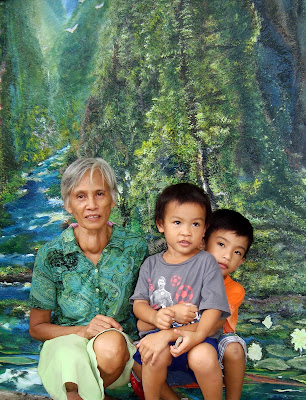Dr Abe V Rotor
Living with Nature School on Blog
Paaralang Bayan sa Himpapawid (People's School-on-Air) with Ms Melly C Tenorio
738 DZRB AM Band, 8 to 9 evening class Monday to Friday (www.pbs.gov.ph)

The water kept on rising and dad made another notch on the post of our stair.
I was in the elementary but I was then strong enough to wade and retrieve our empty basi jars or burnay being swept away by the flood. Since there was no dry ground left I pulled the jars from the rushing current. It was not easy to restrain a jar partly filled with water so that you have to empty it as much as you can before you could pull it to safety. Dad and I barely understood each other at the top of our voices in the downpour and rumbling flood, but I knew he was telling me to let the jars go because of the extreme danger, pointing at the main current just across the house.
But I simply ignored him not realizing the danger until he pulled me, letting off the jars to roll in the current sometimes banging at one another. We never gave up though with whatever we could under the extreme situation. My brother Eugene was even more daring, overtaking the jars before they were swept to the street. Manang Veny kept an watchful eye on the jars in the cellar and under the sagumbi (kichen-granary).
When we were nearly exhausted dad examined the water level he marked earlier. It was down two marks which meant the water was receding. Only then did we realize we had been working in danger, cold and hungry, for the whole morning. In the afternoon the jars came to a halt in the muddy sediment. The flood was over. I thought I saw a white dove flying above.
Where did the floodwater come from? Towards the east is the edge of the Cordillera range running parallel with the coast of
Many years has passed since the Noah’s Flood of my childhood. I trained my tired aging eyes over the Cordillera of my childhood. It too, is now old, tired and worn.~
































































